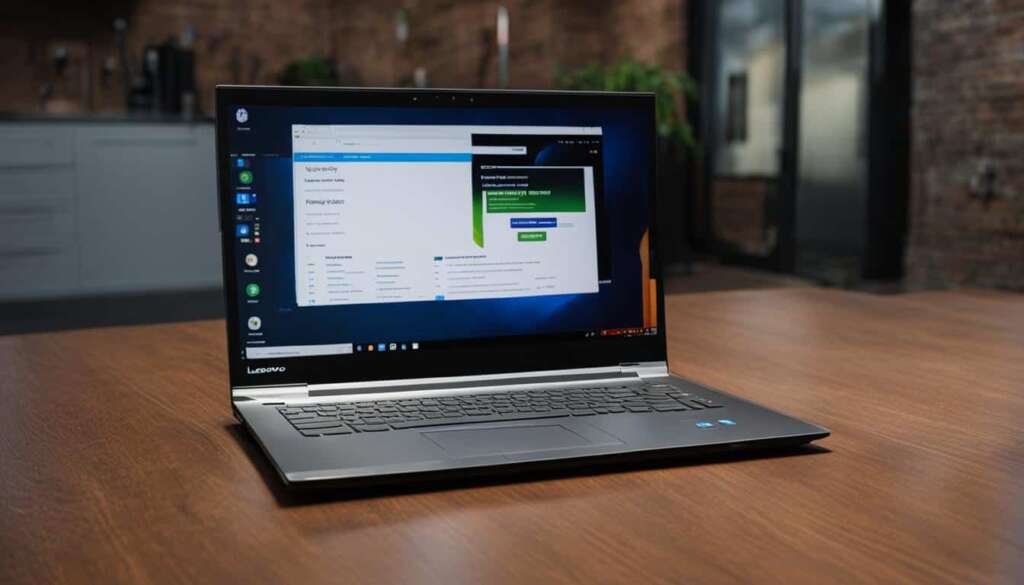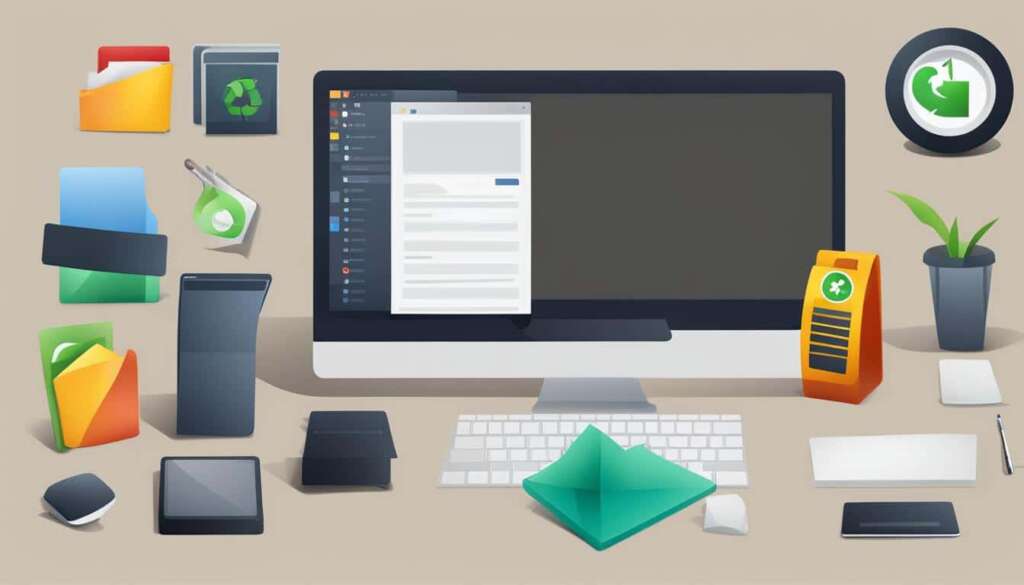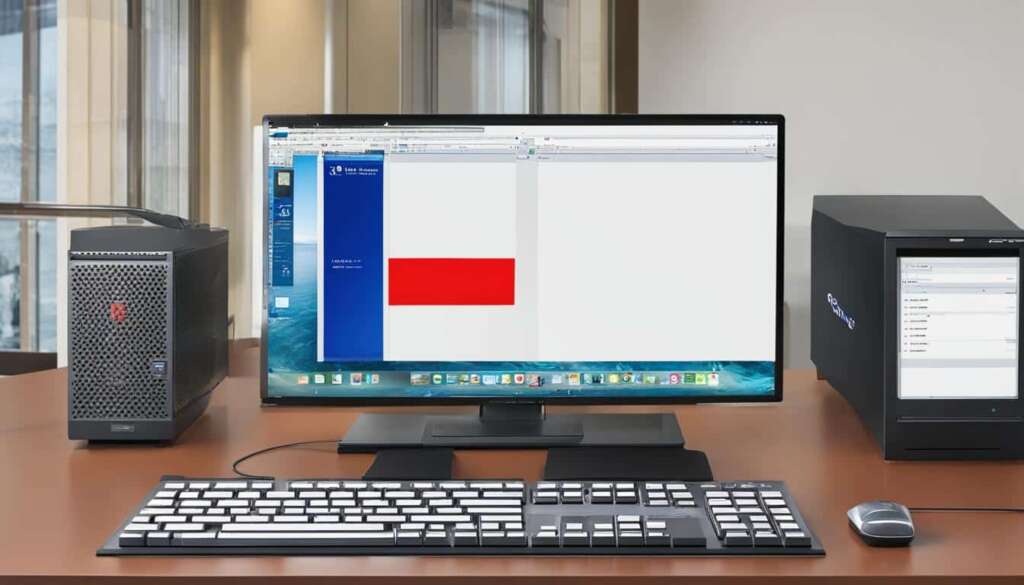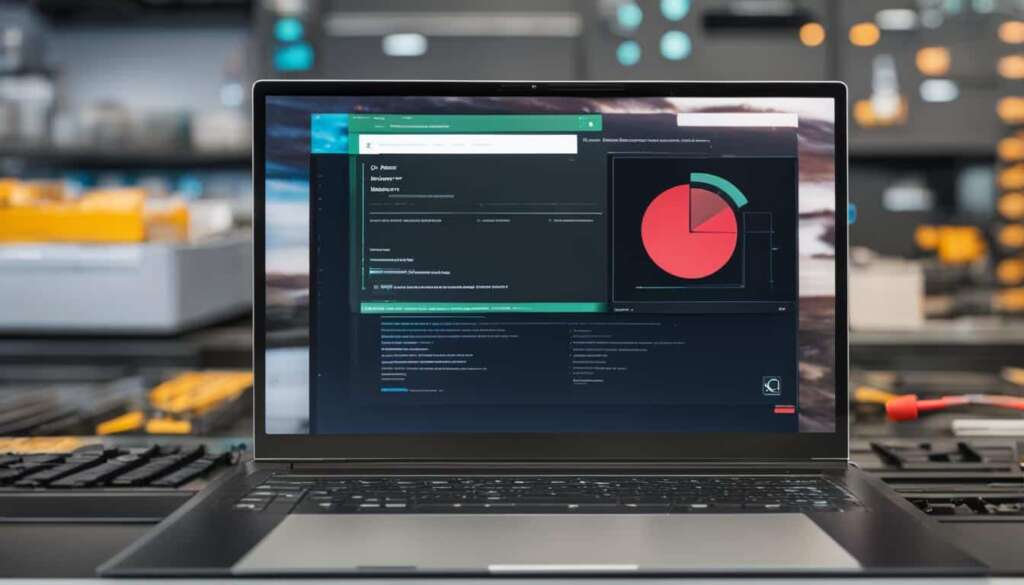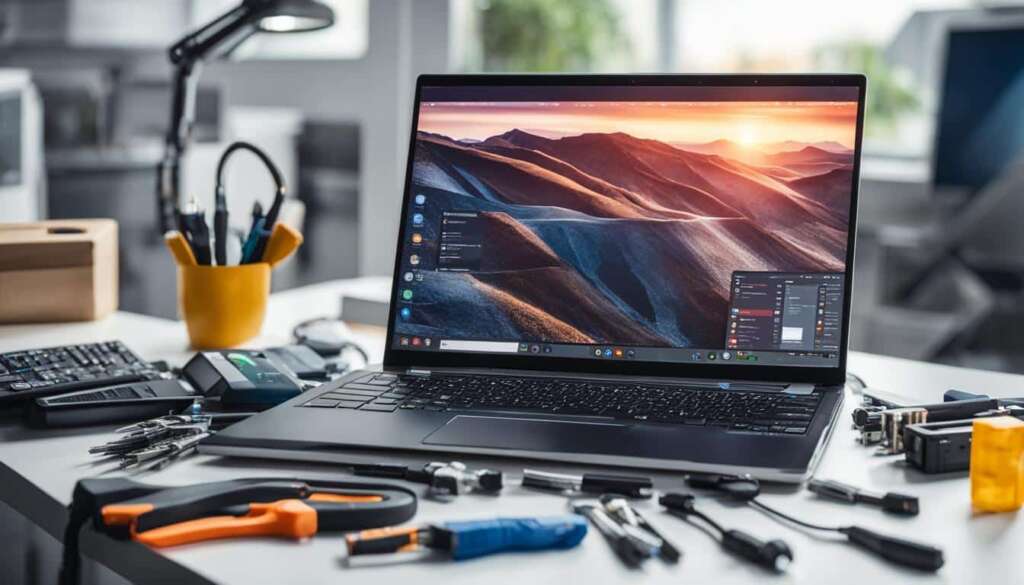Table of Contents
Is your laptop running slow and sluggish? Don’t fret! There’s a simple solution to breathe new life into your device. By resetting your laptop, you can improve its speed, performance, and overall functionality. Whether you’re looking to give it a fresh start, recycle it, or pass it on to a friend or family member, a factory reset is the way to go.
A laptop reset involves saving your old data, removing personal information, and performing a factory reset to restore it to its original settings. The steps may vary depending on the type of laptop you own, whether it’s a Windows laptop, Apple MacBook, or Chromebook. So, let’s explore the ins and outs of laptop resetting and get your device back on track.
Cleaning Your Laptop Before Resetting
Before resetting your laptop, it is important to clean it both physically and digitally to ensure optimal performance. Physically cleaning your laptop helps remove dust and dirt that can accumulate over time, while digital cleaning involves logging out of accounts and wiping down the power adapter.
To clean your laptop physically, you will need a few essential tools like compressed air, disinfectant wipes, and a soft cleaning cloth. Start by turning off your laptop and unplugging it from the power source.
Step 1: Cleaning the Exterior
Use a disinfectant wipe to gently clean the surfaces of your laptop, including the keyboard, touchpad, and the area around the screen. This helps remove any smudges, fingerprints, or stains that may have accumulated over time. Remember to be gentle and avoid getting liquid inside the laptop.
Step 2: Cleaning the Screen
Take a soft cleaning cloth and lightly dampen it with water. Gently wipe the screen in a circular motion to remove any dust or smudges. Avoid using harsh chemicals or abrasive materials as they can damage the screen.
Step 3: Cleaning the Keyboard
Use compressed air to blow out any dust or debris that may be trapped between the keys. Hold the canister upright and spray short bursts of air to prevent any liquid from coming out. You can also use a small brush to gently remove any stubborn particles.
Step 4: Cleaning the Vents and Fans
Locate the air vents on your laptop, usually on the sides or bottom, and use compressed air to blow out any dust or debris. Be sure to hold the canister at a safe distance to prevent excessive force. Cleaning the vents and fans helps improve airflow and prevents overheating.
Once you have completed the physical cleaning process, it is time to focus on the digital cleaning aspects.
Step 5: Logging Out of Accounts
Before resetting your laptop, make sure to log out of all accounts, including iCloud, browsers, and software accounts. This ensures that your personal information and data are securely removed from the laptop. Take the time to sign out of each account individually to ensure a thorough logout process.
Step 6: Unpairing Bluetooth Devices
If you have any Bluetooth devices connected to your laptop, such as headphones or speakers, unpair them before resetting the laptop. This prevents any potential connectivity issues or interference when setting up your laptop again.
Step 7: Resetting NVRAM for MacBook Users
If you are resetting a MacBook, it is recommended to reset the NVRAM (Non-Volatile Random-Access Memory) as well. This helps clear any stored settings and preferences, ensuring a fresh start after the reset. To reset the NVRAM, follow the instructions provided by Apple for your specific MacBook model.
By following these steps, you can ensure that your laptop is clean and prepared for the reset process. Cleaning your laptop both physically and digitally helps improve its overall performance and ensures a fresh start when resetting.
Resetting a MacBook to Factory Settings
In order to perform a factory reset on your MacBook, it is crucial to back up all of your data. This can be done using Apple’s Time Machine feature or by utilizing iCloud. By creating a backup, you can ensure that important files and documents are not lost during the reset process.
Before proceeding with the reset, it is essential to sign out of all your accounts on the MacBook. This includes logging out of iCloud, Find My Mac, iMessage, and any other software accounts that are linked to your device. By signing out of these accounts, you can protect your personal information and prevent any data loss.
To reset the NVRAM (Non-Volatile Random-Access Memory) on your MacBook, press and hold the Option, Command, P, and R keys simultaneously during the startup process. This will reset the NVRAM and may resolve any issues you are experiencing with your device.
Entering Recovery Mode is the next step in the factory reset process. To do this, restart your MacBook and hold down the Command and R keys until the Apple logo appears. In Recovery Mode, you can use Disk Utility to erase the drive on your MacBook. It is important to note that this will permanently delete all data from your device’s hard drive.
Once the drive is erased, you can proceed to reinstall macOS. In Recovery Mode, select the option to reinstall macOS and follow the on-screen instructions. This will install a fresh copy of macOS on your MacBook, effectively restoring it to its factory settings.
After the reinstallation is complete, you can set up your MacBook for yourself or for the recipient if you are gifting it. Follow the prompts to configure the necessary settings, create a user account, and personalize your device.
| Steps to Reset a MacBook | Summary |
|---|---|
| Step 1: Back up all data using Time Machine or iCloud | Protect your files and documents |
| Step 2: Sign out of all accounts | Ensure data privacy and security |
| Step 3: Reset the NVRAM | Resolve any system issues |
| Step 4: Enter Recovery Mode | Prepare for drive erasure |
| Step 5: Erase the drive using Disk Utility | Permanently delete all data |
| Step 6: Reinstall macOS | Restore MacBook to factory settings |
| Step 7: Set up the MacBook | Configure settings and personalize |
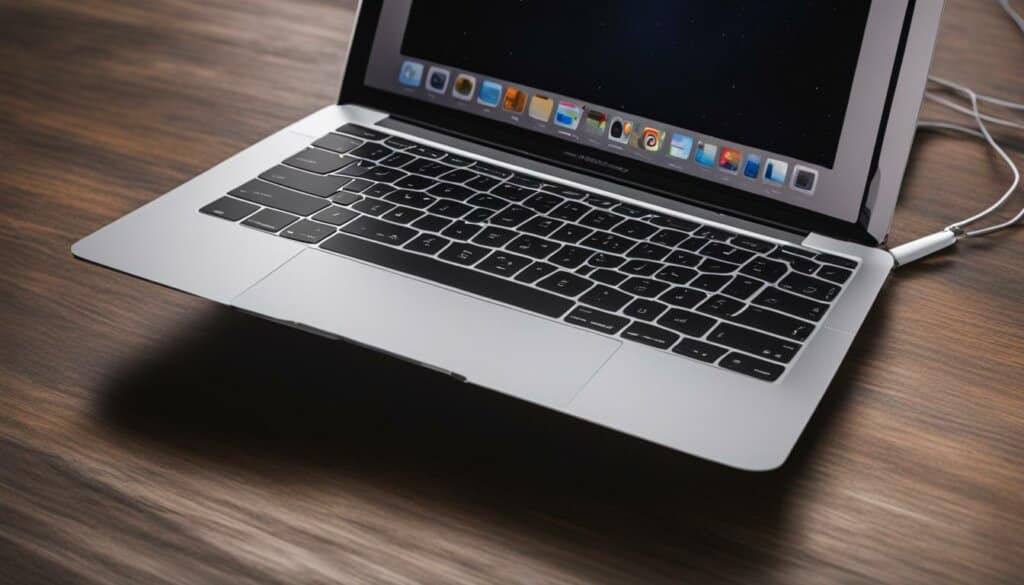
Resetting a Windows Laptop to Factory Settings
Resetting a Windows laptop to factory settings can be a useful way to restore its performance and resolve any software issues. It is essential to follow the correct steps to ensure a successful reset and avoid data loss. In this section, we will guide you through the process of resetting a Windows laptop to its factory settings.
Backup Your Important Data
Before proceeding with a factory reset, it is crucial to backup your important files, folders, and documents. You can do this by saving them to cloud storage services like Microsoft OneDrive, Google Drive, or Dropbox. Alternatively, you can use an external hard drive or USB flash drive to create a backup of your data.
Sign Out of All Accounts
To protect your privacy and ensure a clean reset, it is essential to sign out of all your accounts on the Windows laptop. This includes your Microsoft account, email accounts, social media accounts, and any other associated accounts. Make sure to also deregister any software licenses that are tied to your laptop.
Performing the Factory Reset
To initiate the factory reset process, follow these steps:
- Open the Windows Settings by clicking on the Start menu and selecting the Settings icon.
- In the Settings menu, click on the “Update & Security” option.
- Click on the “Recovery” tab in the left-hand menu.
- Under “Reset this PC,” click on the “Get started” button.
- You will be presented with two options: “Keep my files” and “Remove everything.” Select the “Remove everything” option to perform a complete reset.
- Choose whether you want to clean the drives fully or just remove your files. Cleaning the drives fully will take more time but ensures that your data cannot be recovered.
- Click on the “Reset” button to begin the factory reset process.
During the reset process, your Windows laptop will restart multiple times. It is important not to interrupt the process or turn off your laptop until the reset is complete.
Reinstall Windows and Final Steps
After the factory reset, you have the option to reinstall Windows from the local drive or download it from the cloud. Follow the on-screen instructions provided by Windows to complete the reinstallation process.
Finally, it is recommended to unlink your laptop from your Microsoft account to ensure a clean break. This can be done by going to the “Settings” menu, selecting “Accounts,” and then clicking on “Your info.” From there, you can choose to unlink your Microsoft account.
By following these steps, you can successfully reset your Windows laptop to its factory settings and enjoy a fresh start with improved performance.
Resetting a Chromebook to Factory Settings
When it comes to resetting a Chromebook to its factory settings, there are a few important steps to follow. First, it is crucial to check the auto-update expiration date of the Chromebook. This will ensure that the device is still receiving security and software updates from Google.
Once you have confirmed that the auto-update expiration date is valid, you can proceed with the factory reset process. Chromebooks have a convenient feature called Powerwash, which securely wipes all data on the device and restores it to its original state. This is a quick and easy way to get your Chromebook back to its factory settings, ready for a fresh start.
However, it is important to note that Powerwash only resets the device itself. To completely remove the Chromebook from your Google account, you will need to access the Security settings. Here, you can remove the device from your account, ensuring that all personal information is removed.
Resetting a Chromebook and removing it from your Google account is a simple process that ensures your privacy and gives you peace of mind. Whether you are gifting or selling your Chromebook or simply starting fresh, following these steps will result in a clean and secure device.
| Advantages of Resetting a Chromebook |
|---|
| Restores the Chromebook to its original state |
| Removes personal data and information |
| Ensures privacy when gifting or selling the Chromebook |
| Resolves performance issues and improves speed |
Performing a Factory Reset Using Recovery Partition
If your laptop has a recovery partition, you can easily perform a factory reset using the built-in recovery tools. This is a convenient and efficient way to restore your laptop to its original state. Different laptop manufacturers have different key combinations to access the recovery environment, so be sure to check your laptop’s user manual or the manufacturer’s website for specific instructions.
Before you proceed with the factory reset, it is crucial to back up all your important data. This will ensure that you can restore your files and settings after the reset process is complete.
Once you’ve backed up your data, follow these steps to perform a factory reset using the recovery partition:
- Restart your laptop and press the specified key combination during startup to access the recovery environment.
- Once you’re in the recovery environment, follow the on-screen instructions to navigate to the reset options.
- Choose the “Reset this PC” option to initiate the factory reset.
- Depending on your laptop, you may have the option to choose between a full reset, which removes all personal files and settings, or a partial reset, which keeps your personal files but removes installed applications.
- Confirm your selection and allow the reset process to complete. This may take some time.
After the factory reset is complete, your laptop will be restored to its original settings. You can then start fresh or reinstall your applications and restore your files from the backup you created earlier.
Remember, performing a factory reset using the recovery partition is a powerful tool, but it will erase all data on your laptop. Make sure to back up your important files and settings before proceeding.

Conclusion
Factory resetting your laptop can provide numerous benefits that contribute to improved performance, data security, and the preparation of your device for gifting or recycling. By following the specific steps tailored to your laptop type, you can achieve a seamless and efficient reset process. However, it is crucial to back up all essential data before initiating the factory reset to prevent irreversible data loss.
Regular laptop maintenance, including both physical cleaning and data backups, is essential to ensure optimal performance and longevity. By keeping your laptop clean, free from dust and debris, and regularly backing up important files, you can enjoy a smooth computing experience.
Whether you’re seeking to optimize your laptop’s performance, safeguard personal information, or prepare it as a thoughtful gift for a loved one, a factory reset can be an effective solution. Remember to carefully follow the instructions for your specific laptop brand and model, and never underestimate the importance of regular maintenance and backups to maintain the efficiency and reliability of your device.
FAQ
Why is it important to reset a laptop before giving it away or recycling?
Resetting a laptop ensures that all personal data is erased, protecting your privacy and preventing your information from falling into the wrong hands.
How do I clean my laptop before resetting it?
Physically clean your laptop by using compressed air to remove dust from fans and vents, and disinfectant wipes to wipe down the screen and keyboard. Also, log out of all accounts, remove dust from the power adapter, and unpair any Bluetooth devices.
How do I reset a MacBook to factory settings?
Before resetting, back up all data using Time Machine or iCloud. Log out of all accounts, including iCloud, Find My Mac, iMessage, and software accounts. Reset the NVRAM by pressing and holding Option-Command-P-R during startup. In Recovery Mode, erase the drive using Disk Utility and reinstall MacOS.
What are the steps to reset a Windows laptop to factory settings?
First, back up important folders and files. Sign out of all accounts and deregister software licenses. In the Windows Settings, choose the Reset this PC option and select Remove Everything. Reinstall Windows from the local drive or download it from the cloud. Lastly, unlink the laptop from the Microsoft account.
How do I reset a Chromebook to its factory settings?
Check the auto-update expiration date to ensure it is still receiving updates. Use the Powerwash feature to securely wipe the data and restore the Chromebook to its original state. Remove the Chromebook from your Google account through the Security settings.
Can I perform a factory reset using the recovery partition?
Yes, if your laptop has a recovery partition, you can access the built-in recovery tools. Follow the on-screen instructions and choose the Reset this PC option. Remember to back up all data before performing the factory reset.
What are the benefits of a factory reset on a laptop?
Factory resetting improves performance by removing unnecessary files and settings. It also wipes personal data, ensuring privacy, and prepares the laptop for gifting, recycling, or donation. Regular laptop maintenance, such as cleaning and backups, can help maintain performance and efficiency.



